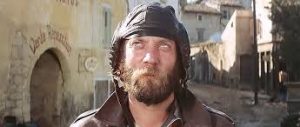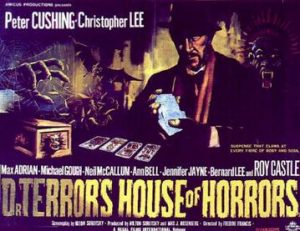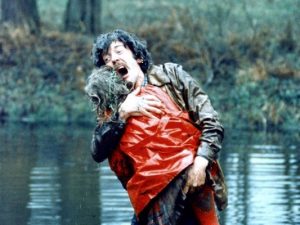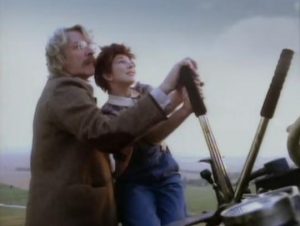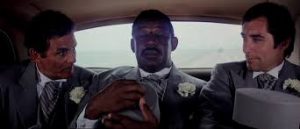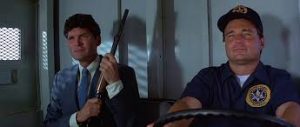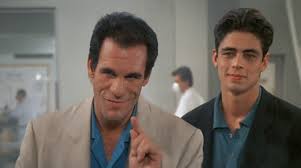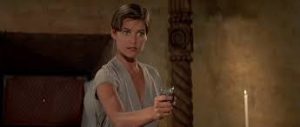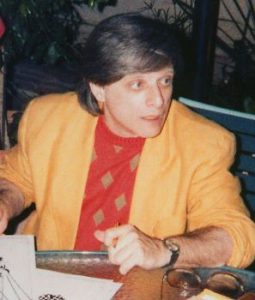
© Martin Joseph
My reading has waxed and waned this year. Until March, I lived in an apartment that required a 40-minute ride on a single bus to, and from, my workplace every day. That meant each working day I’d spend more than an hour sitting on a bus with my nose stuck in a book. As a result, I read a lot – six books in January 2024 alone, for instance.
However, one house-move and change-of-address later, I now find myself travelling to work on one bus for ten minutes, and then either on another bus for 15 minutes or on Singapore’s MRT system for five minutes. And suddenly, my reading has been knocked for six. I’ve barely got my latest book out and started perusing its pages when it’s time to change bus or change transport-mode. Since then, in the past few months, the books I’ve managed to finish have numbered a measly half-dozen.
However, one book I’ve read lately has bucked that trend. It’s a book that, from the moment I started it, I couldn’t put it down. This didn’t just happen while I was in transit to and from work. I was sneaking reads of it at my desk in the office. I was also reading it at home, much to the disgust of my always attention-hungry cat. It’s been a long time indeed since a book has taken over my life this way.
The book was The Winter King (1995), the first volume in Bernard Cornwell’s Warlord trilogy, his retelling of the legend of King Arthur.
It’s the first Arthurian novel I’ve read in a while. The last one was Kazuo Ishiguro’s 2015 novel The Buried Giant (though I suppose it’s better described as a ‘post-Arthurian’ novel), which I read early in the days of the Covid-19 pandemic. A couple of years before that, I read T. H. White’s Once and Future King series, which consisted of The Sword in the Stone (1938), The Queen of Air and Darkness (1939), The Ill-Made Knight (1940), The Candle in the Wind (1958) and The Book of Merlyn (1977). Yes, the first book was turned into an underwhelming animated movie by Walt Disney in 1963, but the literary series becomes impressively philosophical, political and tragic as it goes on.
From what I’d heard about the Warlord trilogy, The Winter King was going to be a very different proposition. The word people have used again and again in relation to Cornwall’s books is ‘realism’. Thus, I shouldn’t expect Merlin to tutor Arthur by turning him into a fish, hawk, goose, ant, whatever, as he did in the T. H. White books. No, I expected The Winter King to drip with grim, dark, bloody and muddy veracity, painting as authentic as a picture as is possible (1500 years on) of life in fifth-century Britain, after the Romans had departed and when the Britons found their way of life under threat from invading Saxons. And all the fanciful embellishments that, over the centuries and millennia, have been added to King Arthur’s legend would be shorn from the story.

© Martin Joseph
That was what I expected and in many ways it’s what I got. But the fanciful stuff isn’t banished altogether. Cornwell’s premise is that Arthur’s story is being written down after his death by an elderly man called Derfel. At the book’s start, Derfel is a Christian monk but, as a young man, he was both a pagan and one of Arthur’s most trusted warriors. He’s writing at the urging of the young Queen Igraine, who’s obsessed with the – already exaggerated – tales of Arthur she’s heard. And while Derfel records the story, she badgers him about the enchanting bits he’s left out. What about Arthur, as a boy, pulling a sword out of a stone? No, Derfel patiently tells her, that never happened – though in a ceremony once, Merlin did sadistically make the young Arthur stand all night on top of a stone in the middle of Stonehenge, holding a heavy sword. And what of the gallant and romantic Sir Lancelot? Well, Derfel concedes, Lancelot did exist – but he was a complete c*nt.
Revelations like these obviously aren’t what Igraine wants to hear. You get the impression that, once Derfel’s completed manuscript is in her hands, she’ll have her own scribes alter it until the story is one she’s comfortable with. And so, Cornwell suggests, even when Arthur’s exploits were transcribed for the first time, revisionism was at work. As James Stewart’s newspaper-man declares in John Ford’s classic western The Man Who Shot Liberty Vallance (1962), “This is the West, sir. When the legend becomes fact, print the legend.”
Cornwell’s treatment of magic and the supernatural is a little unexpected too. He doesn’t have Merlin performing magical feats in front of our faces, but in a way such things exist – supposedly at the behest of the druids and witches that lurk at the fringes of this primitive, violent society. They play a major role because, real or not, people believe in them. When, for example, Nimue – in traditional Arthurian mythology the main Lady of the Lake, but here a witch-girl who’s one of Merlin’s acolytes and with whom, throughout the story, Derfel has a strange, on-off love affair – constructs a ‘ghost-fence’ out of wooden posts and severed human heads along the flank of an army, it doesn’t matter if the fence possesses real magical powers or not. The fact is, the enemy soldiers are convinced it does and nothing will induce them to cross the thing. No wonder that when the novel’s various kings and warlords move their armies into battle, they’re usually accompanied by a gaggle of verminous druids who histrionically cast spells and curses at their foes.
Interestingly, though Christianity has taken hold in fifth-century Britain and has many converts, including some among the powerful, it’s generally regarded as a curious, sometimes incomprehensible counterpart to the druidic paganism that pre-dates it. As Cornwell writes in the book’s opening pages about Uther Pendragon, king of the land of Dumnonia, he “did accept that the Christian god probably had as much power as most other gods.” Accordingly, as king, he decides to play it safe and employs a few Christian priests in his service as well as a few old-school druids.
This is underlined early on when we see Pendragon, desperate for his pregnant daughter-in-law Norwenna to give birth to a healthy male heir, rely first of all on the priests of his Christian advisor Bishop Bedwin, “chanting their prayers in a chamber beside the hall where holy water had been sprinkled, a cross had been hung over the birth bed and another put beneath Norwenna’s body.” When the birth-process takes a turn for the worse, Pendragon orders the priests out and replaces them with a delegation from Ynys Wydryn – Merlin’s abode – led by the pagan priestess Morgan (a more-disturbing-than-usual version of Morgan le Fay).
“Sebile, Morgan’s slave, put a birch branch over the hall door and waved another over the writhing body of the hurting Princess. Nimue crouched in the door and urinated on the threshold to keep the evil fairies away from the hall, then she cupped some of her urine and carried it to Norwenna’s bed where she sprinkled it on the straw as a further precaution against the child’s soul being stolen away at the moment of birth. Morgan… slapped Norwenna’s hands away so she could force a charm of rare amber between the Princess’s breasts.” Meanwhile, on the ramparts outside, the pagans from Ynys Wydryn light multiple fires and create an unholy racket. “The guards beat their spear-shafts against their shields, and the priests piled more wood on a dozen blazing pyres while the rest of us screamed our noisy challenges against the evil wraiths that had slithered through the night to curse Norwenna’s labour.”
Incidentally, the baby that’s successfully delivered isn’t Arthur, but his nephew Mordred. Arthur is Pendragon’s bastard son and because of his illegitimacy is unable to inherit the crown of Dumnonia himself. He’s already an adult when Derfel begins his tale, is engaged overseas in Amorica – Brittany – and doesn’t make an appearance until about a hundred pages in, when he returns to Dumnonia to become the infant Mordred’s protector.

© Estate of Aubrey Beardsley
Also off-stage for much of the book is Merlin. He’s been on a quest to locate something called ‘the Knowledge of Britain’, and has been absent for so long it’s rumoured he might even be dead. In the meantime, life goes on at his base at Ynys Wydryn, a sort of demented, pagan hippy-commune supervised by Morgan and Nimue. There, Merlin, “for his pleasure… had assembled a tribe of maimed, disfigured, twisted and half-mad creatures…” One of its inhabitants is Derfel, who as a small child seemingly miraculously escaped a massacre carried out by the brutal King Gundleus, of the neighbouring land of Siluria. “The Tor was filled with such children who had been snatched from the Gods. Merlin believed we were special and that we might grow into a new order of Druids and Priestesses who could help him re-establish the old true religion in Rome-blighted Britain, but he never had time to teach us.” How Derfel ends up in his old age as a monk in a Christian monastery is presumably something the trilogy’s later books will explain.
Cornwell makes Merlin a memorable character, when he finally appears, and he’s responsible for much of the book’s humour. (Despite its realism, The Winter King is, in places, very amusing.) But Merlin is also, for me, one of the book’s few weaknesses. Specifically, the manner in which Merlin reappears undermines the narrative, because it’s all a bit too unlikely. A couple of times, the cunning old wizard pops up out of nowhere and saves the day. He might as well just whip off a Mission Impossible-style rubber face-mask / disguise and go, “Duh-dah!”
Anyway, that’s the set-up. After Pendragon’s death, Arthur becomes unofficial king of Dumnonia, keeping the throne warm for its official occupant, Mordred, who’s still an infant. Meanwhile, with the Saxons seizing large tracts of Britain’s east coast, Arthur knows he must try to build an alliance among the Britons’ kingdoms – Dumnonia, Gwent, Powys, Kernow and evil King Gundleus’s Siluria, i.e., what’s now modern-day Wales and western England – to fight the invaders off. That is no easy job given the rivalries and feuding that beset the leaders of those kingdoms. And Arthur ends up making the situation worse. He lets his heart rule his head and backs out of an arranged marriage designed to cement the necessary alliance – outraging everyone involved – after falling in love with a certain Guinevere. Of Guinevere, Merlin comments acidly, “it would have been better… had she been drowned at birth.”
Bernard Cornwell is, of course, best-known for his 24 novels about British soldier Richard Sharpe, set during the Napoleonic Wars. I haven’t read any of these – basically because for years I’ve been working my way through another lengthy series of novels set during the Napoleonic Wars, the Jack Aubrey and Stephen Maturin stories of Patrick O’Brian. Well, if the Sharpe books are as gripping and entertaining as The Winter King, I’ll certainly make a point of reading them eventually… But first I’m going to read the other two entries in the Warlord trilogy, Enemy of God (1996) and Excalibur (1997).













